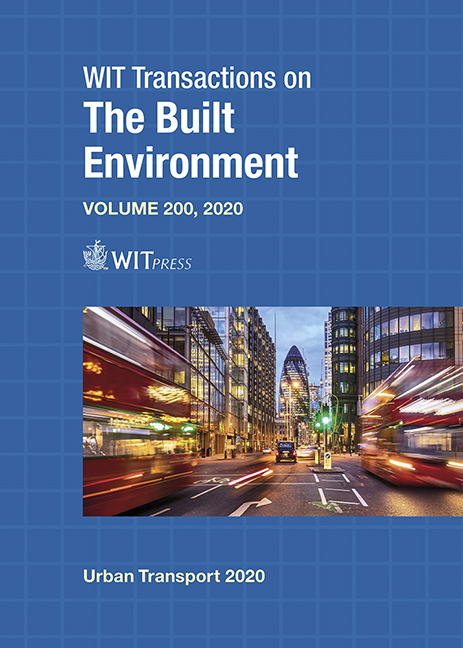RAILWAY CORRIDOR AS A FUNCTIONAL SUBSYSTEM FOR REBALANCING SOCIALLY AND ENVIRONMENTALLY METROPOLITAN AREAS
Price
Free (open access)
Transaction
Volume
200
Pages
11
Page Range
91 - 101
Published
2020
Paper DOI
10.2495/UT200081
Copyright
WIT Press
Author(s)
JOAN MORENO SANZ
Abstract
The way we move around a territory is linked to the way we occupy it. In this sense, integrated spatial and transport planning is useful to build relations between land-use patterns and mobility flows in line with principles of sustainable urban development such as spatial cohesion, social inclusion, environmental quality and economic competitiveness. The main goal of this paper is to assess the strengths and weaknesses of railway corridors as Metropolitan functional systems according to public transport networks in compact and mixed land-use urban environments based on TOD models. The initial hypothesis is that railway corridors could become functional subsystems at the metropolitan level based on specialized activities which combine the local and global, public and private, natural and manufactured, as well as social inclusion and economic growth. Methodologically, the paper suggests a structural prospective analysis of spatial politics implemented in metropolitan railway districts as transportation nodes and urban centralities based on quantitative and qualitative indicators. Under this method, the spatial area around each train station (800 m) is analysed from three perspectives: connectivity to local networks, built and planned land-use patterns, and governance and public functions assigned with regard to infrastructural networks and spatial planning. The research project analyses the capacity for transforming railway districts into metropolitan hubs, where transportation efficiency and urban development take place at the regional level as a coordinated functional subsystem. The study cases are the Stedenbaan and the Sleutelprojecten Programmes carried out in the Randstad. These programmes suggest an integrated spatial planning between public transportation networks and urban centres. Specialised and coordinated urban development oriented to public transport could contribute to economic competitiveness, inclusive mobility, and environmental infrastructure at the metropolitan level.
Keywords
public transport network, metropolitan areas, Stedenbaan Programme, Randstad-Holland





